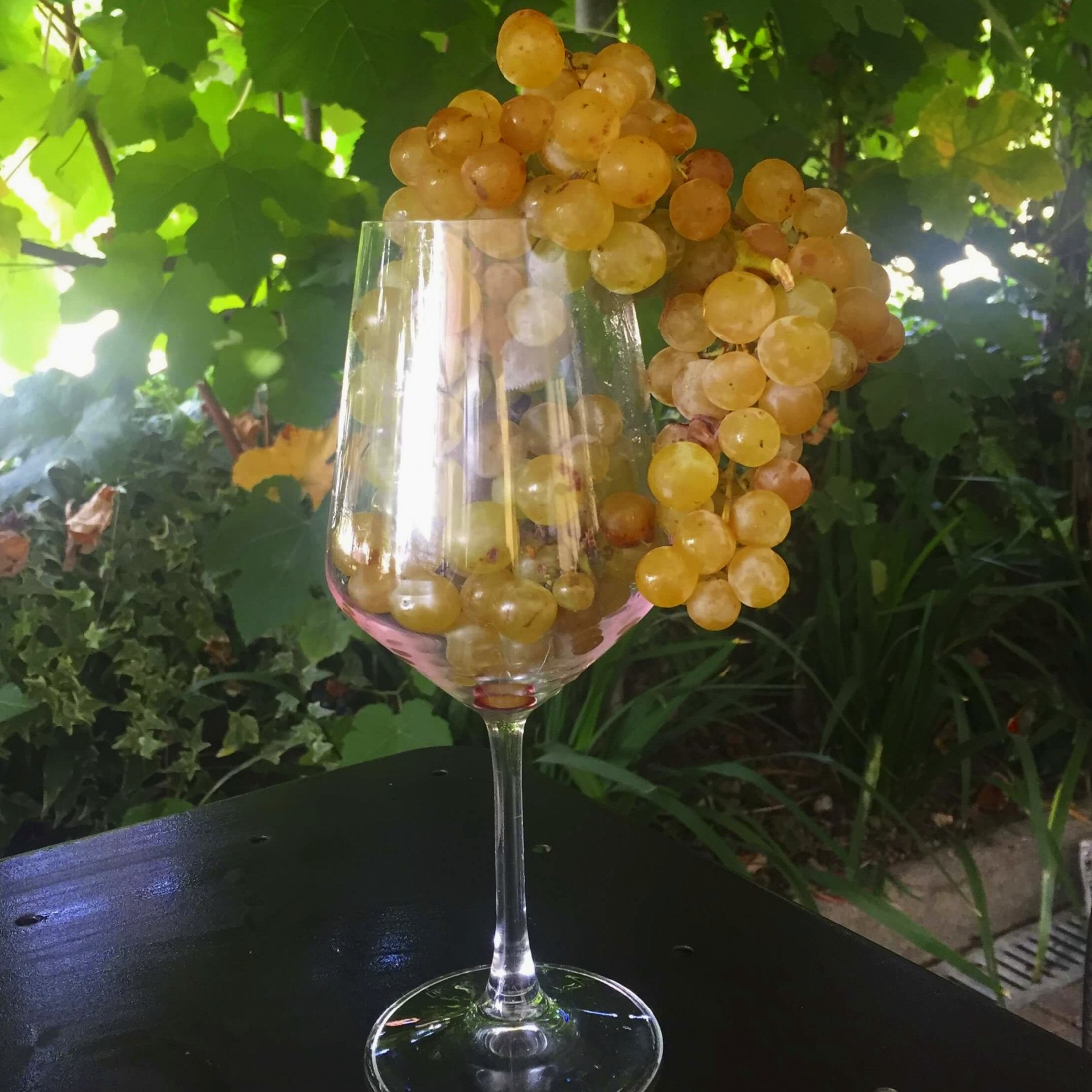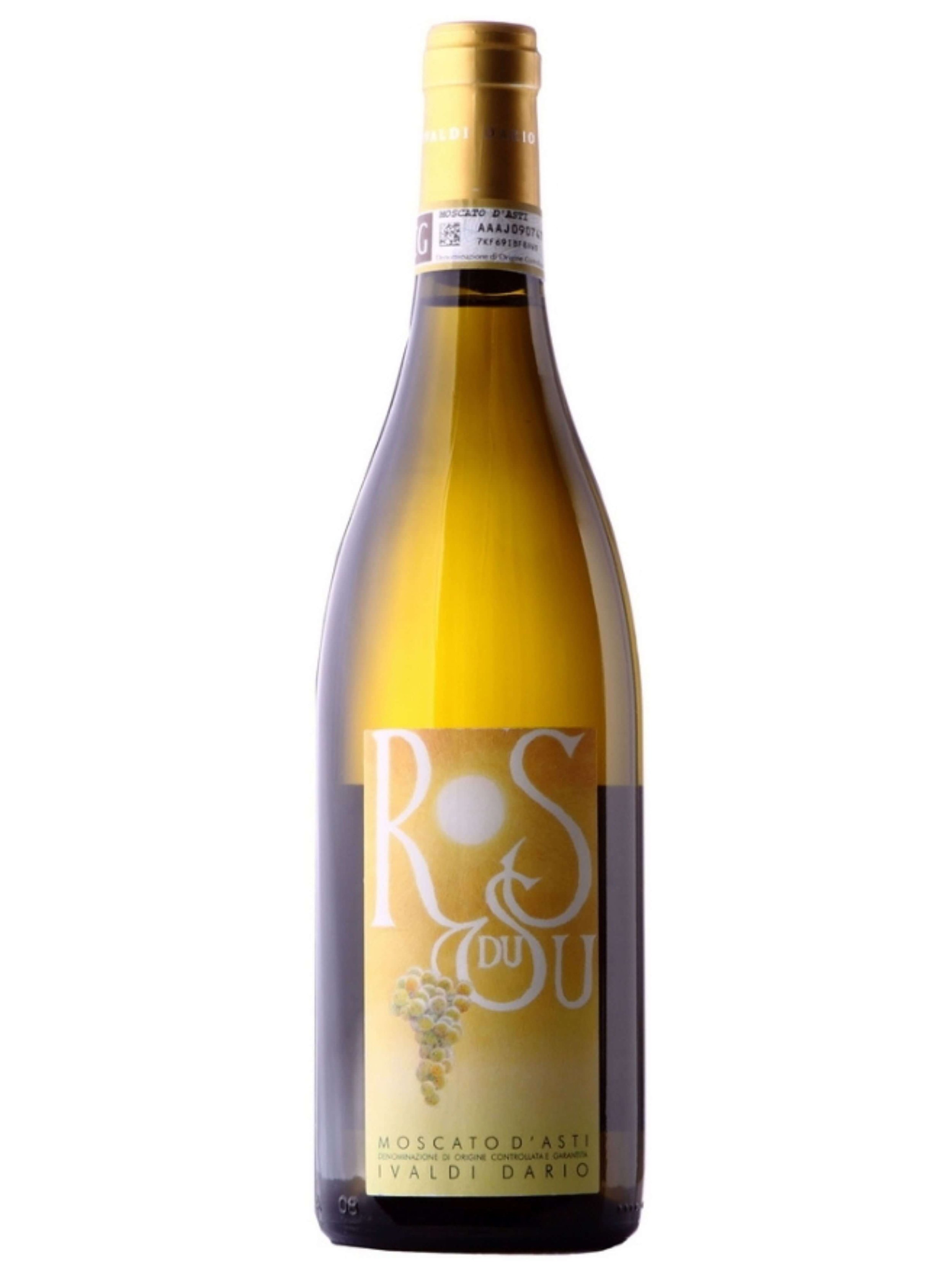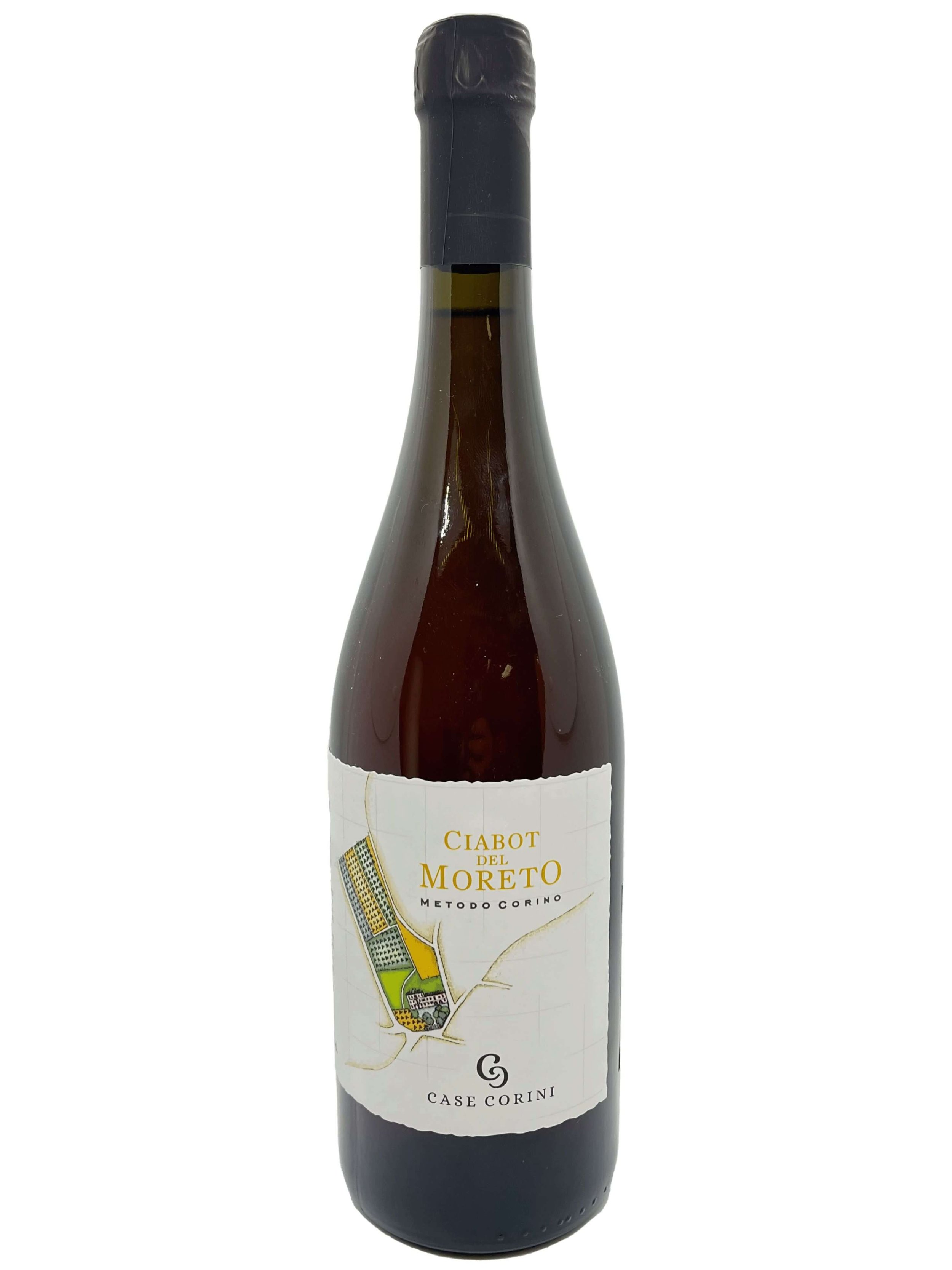You Can’t Put a Label on This Wine
Unassuming yet globally popular, Moscato d’Asti offers a delightful introduction to the world of aromatic white wines. Crafted from the moscato grape variety, it boasts a captivating and intense bouquet of floral and fruity notes, accompanied by a gentle effervescence. For many it is their go-to wine while others shy away from it, thinking it will be cloyingly sweet. There are some that are like that by with patience you’ll find a well balanced Moscato d’Asti which appeals to all palettes. By understanding its origins, production, and distinctive characteristics, we gain a deeper appreciation for this versatile and ever popular wine.
History of Moscato Grapes
The world of Moscato is vast. “Moscato” is actually a family of grapes, coming in several different varieties. However, today we are going to focus on one in particular: Moscato Bianco, or Muscat Blanc. In fact, you may occasionally hear moscato referred to as muscat wine or muscat grapes, but this is simply nomenclature, with moscato being the more Italianized version. Moscato bianco is one of the most ancient varieties we can trace, with authors like Ian d’Agata in Native Wine Grapes of Italy saying, “Moscato Bianco was likely known in ancient Rome, if not earlier. The famous Uve Apiane of antiquity described by Pliny and other Roman men of letters are believed to have been for the most part Moscatos […]. Apparently, the Uve Apiane were the same as the high-quality Anathelicon Moschaton described by the Greeks.” Additionally, moscato bianco is grown all over the world, from old to new world countries, and all up and down the Italian peninsula where it has its roots.
We’re going to focus on the area where moscato bianco is most famous for: Asti and the Monferrato in Piedmont, Northern Italy. In fact, despite today Piedmont being known more for making some of the best red wines in the world, moscato bianco is considered to be one of the oldest grapes grown in the region and making perhaps the most famous of all sweet white wines.
Moscato bianco grapes just harvested.
Moscato d’Asti Wine
For centuries, moscato bianco was used to make wine in Piedmont. The “modern” world’s familiarlity with Moscato Bianco wine is the sparkling, sweet wine that resembles what we usually think about when we hear “Moscato” was started in the 1870s. It was Carlos Gancia in the Asti province that made the “Asti Method” mainstream for making sweet moscato sparkling wine; it’s a method that is still in use today to produce low alcohol wines, that are also sweet and sparkling, which we will discuss later.
According to Wikipedia: ”Moscato d'Asti was the wine that winemakers made for themselves. This low-alcohol wine could be drunk at noontime meals and would not slow down the winemaker or his workers.” Another fun fact: the Moscato d’Asti that we import in is so low in alcohol that we could not even follow with the usual US government procedure for wine labels. Instead, it is considered a food product and has the standard ingredients label as food does.
While, admittedly, in the 1970s and 1980s, most Moscato Asti wines were not exactly known for quality, with high quantity being the priority. However, in recent years, the Moscato d’Asti DOCG wines (DOCG meaning Controlled and Guaranteed Denomination of Origin in Italy), has had a rebound with producers focusing on quality above all.
Let’s have a look at a traditional, classic Moscato vino. As we mentioned in the introduction, moscato is an aromatic variety. This basically means that it has distinct, powerful, and identifiable fruity or floral aromas. A peculiarity of moscato, is that because of these aromatic properties, the grape tastes nearly identical to the wine. In fact, moscato grapes are delicious to eat just on their own. Because of this, winemakers often try to leave the wine as young and fresh as possible, to not cover up the inherent aromatic compounds in the grapes and wines (although, there are delicious and fascinating exceptions to this rule as we will see later).
A classic Moscato d’Asti is an Italian fizzy wine (just slightly sparkling) with intense aromas of sweet flower blossoms, peaches and citrus fruits. Because of the correlation between the hyper-recognizable and unique aromas and flavors that follow moscato in its lifecycle from grape, to juice/must, to wine, it is a wine that genuinely tastes of “grapes”.
The Moreto vineyard of Case Corini, where their moscato grapes come from for Ciabot del Moreto.
Now, is moscato sweet? The answer here is both yes and no. While the traditional DOCG Moscato described above is usually made in a sweet, dessert wine style. In the Asti method mentioned previously, grape juice or must is fermented until it reaches a desired low alcohol level (as low as 5%), meaning that not all of the sugars have been completely eaten up by the yeasts. This initial fermentation takes place in pressurized tanks, similar to the Charmat method, or tank method, typically used with Prosecco, which involves trapping the carbon dioxide to make bubbles. The difference with the Asti method is that they purposefully want that low alcohol level to be maintained which allows the wine to be sweeter. Once this low alcohol is achieved, the wine is then super chilled to stop the fermentation, then filtered to remove the yeasts. This leaves a bubbly wine with a low alcohol and residual sugars. This style also helps preserve the inherent aromatic fruity and floral characteristics of Moscato wines. (Fun fact, the Asti method is also used to make sweet red wines, like Brachetto d’Acqui, made from brachetto, another aromatic grape, although it is red, making a slightly sweet red sparkling wine.)
However, moscato can be fermented as a still wine, just a regular white wine moscato. Well known examples of this could be from the mountainous region of Valle d’Aosta with the Chambave Moscato, but there are still a few producers in the Asti area making moscato fermented as a “regular” still white grape variety. One fascinating example of a moscato bianco made as an orange wine, or skin contact moscato, is Case Corini’s Ciabot del Moreto. While it technically is a dry wine, it is a native yeast fermented which means that Lorenzo Corino’s family left it up to nature to ferment. The fermentation stopped naturally, leaving this skin contact orange wine with some residual sugar. Yet thanks to the salinity and tannins of this structured orange moscato wine, it is still incredibly balanced.
Go Beyond Dessert Pairings with Moscato
In Italy, sweet Moscato wines are traditionally paired with desserts. That’s not surprising, as you would know, if you’re a regular blog reader of ours, from this article on wine and food pairing that sweet and sweet go together, sweet wines and sweet foods. During the holidays in in Italy it is a traditional to go pairing with this classic Asti wine is Panettone, a sweet Christmas bread.
A classic Moscato d’Asti pairs well with jam based pies.
We actually have a couple of recipes of our own which pair great with Moscato d’Asti, like:
zabajone, an egg custard which in this recipe we made with Nebbiolo wine, although more traditionally it is made with Moscato with which you can easily substitute in our recipe.
But guess what: Moscato wine doesn’t just pair with desserts!
Moscato is versatile and can be enjoyed with a variety of foods beyond desserts, as is the story with many different sweet wine pairings. Try pairing Moscato d'Asti with savory dishes, since the sweetness of Moscato d'Asti can complement the salty flavors in foods, such as oysters, where Moscato is a fun alternative to the usual pairing of Champagne and oysters. Also, creamy cheeses can also pair well with Moscato d'Asti as then soft acidity and sweetness of the wine can help to cut through the creaminess of the cheese. Moscato can pair with some more delicately flavored cured meats, like Prosciutto, on a charcuterie board.
One of the funnest parts of food and wine pairings is to experiment… try different things! Read our full guide about pairing food and wine and come up with your own Moscato pairings, and tell us about them!
Or you can, of course, sip a Moscato wine on its own, enjoying the delicate yet intense aromatics that makes it a super well-liked wine.
How to Pick Out a Good Moscato Wine
Start exploring Moscato Bianco wines that have a different take than your typical Moscato wine you see in the supermarket.
One is this slightly sweet Moscato d’Asti which is like drinking chamomile and honey as a slightly sparkling wine. While this Moscato does follow the DOCG standards, winemaker Andrea Ivaldi strives for his sweet wines, including his Brachetto d’Acqui sweet red sparkling wine, to have balance. Jacqueline Mitchell of Vero, who as a wine expert and chef living in Piedmont, had tasted a fair share of Asti Moscato wines and was admittedly not big fan, until she tried Ivaldi’s Moscato. She was pleasantly surprised while her eyes were opened to a really good Moscato d’Asti.
Ciabot del Moreto is the orange wine version of moscato.
This Italian winery, Ivaldi, leans towards traditional takes of all of their wines, meaning that they want the characteristics of the grape and terroir to shine through as you taste their wines. With Ivaldi’s Moscato d’Asti, this literally happens, as the name of the wine, Ros du Su, means ray of sunshine in Piemontese dialect. In fact, even the color is a tip-off, with its inviting golden yellow color. There is a sweetness balanced by a refreshing acidity and a hint of mineral sapidity. This Moscato tastes like its aromas: grape juice, honeysuckle flowers, all drizzled in a light and fragrant honey. The light bubbles just tickle your tongue and palate, just helping to give a lightness to the thickness of the wine, created by the residual sugars.
With this wine, we learned a trick from Ivaldi winemaker, Andrea, who, by the way, grew up in a multi generation family of winegrowers and is an enologist himself: to pick out a good Moscato, one that Ros du Su, you need a decent level of acidity and/or sapidity to help balance against the sweetness. This keeps your Moscato from becoming cloyingly sweet, and instead it remains refreshing and sippable.
Then, moving onto an extremely unique Moscato, try this Moscato orange wine. Ciabot del Moreto is a natural wine, organic, biodynamic and with no additives, from cult winery Case Corini.
If Ros du Su is sunshine at mid-day, Ciabot del Moreto is the sunset with deep, orange colors reflecting on an evening cloud cover. Fermented as a dry wine, this Moscato comes in at a weightly 15% alcohol for a thick, gooey, and almost passito-like experience. Thanks to the skin-contact maceration, as in an orange wine style, there are grippy tannins on the palate. But really, the most fascinating aspect to this wine is interplay between aroma, flavor, as well as the sapidity. In Moscato style, they complement perfectly, and boy are they pungent and intense. This is the type of wine that you can start to smell the aromas as it is being poured, and that makes your mouth water in anticipation all the more. From dried apricots, to candied ginger and orange peels, it feels like soft and chewy dessert bread in a glass.
Try These Exceptional Moscatos
For those of you that know our curation style, you know that we love to support small producers and bring you unique fun wines, be it if they are made classically or with a twist. Whatever it may be, we just love to search them out. And you can enjoy these curations by trying a selection of different wines and different winegrowers from our portfolio. We sell to both businesses and consumers across the US:
We are enlarging our network of distributors around the country. Reach out to us if you are interested in distributing our wines.
We sell to wine stores and restaurants in certain states - contact us if you would like more info.
We do corporate gifts and sommelier guided wine tastings. Email us and we’ll tailor unique and sustainable corporate gift ideas.
If our farm crafted wines and olive oils are not in your local shop or restaurant, you can buy wine online here in our VeroShop, and we’ll ship it to you, including wine gifts, and we ship to most states. Do a back to back tasting of Ivaldi’s Ros du Su classic Moscato d’Asti and Case Corini’s orange Ciabot del Moreto and let us know what do you think of the differences in style?
We also have an award winning wine club for true wine explorers that are seeking to continually discover unique, sustainable and authentic small production wines they never had. These are wines selected by our sommeliers and curated for each box.






